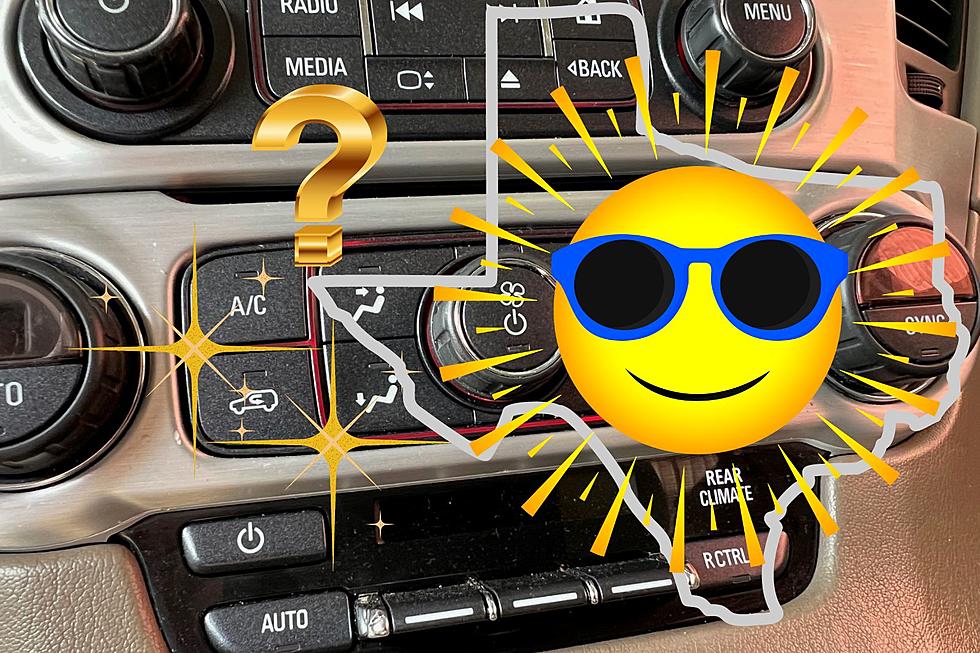
Lovebugs Are Back For Round 2
They are making a return to East Texas right on the heels of Tropical Storm Imelda. This storm has already claimed 5 lives in Texas due to the flooding. I know there are lots more named storms out there, and we can't take on any more water in some parts of Texas. Just as soon as the rain stopped on Thursday, lovebugs were seemingly everywhere. I read this entire article, and they serve the same purpose as any other fly, it's only during their larvae stage that they do anything useful.
Believe it or not, lovebugs have a purpose
By Brooke Crum - Beaumont Enterprise
Lovebugs are in the air, but fortunately, they won't be here long.
Dubbed "lovebugs" because of their in-flight mating, the pests pose no threat to the environment or people. They do not bite or sting. In fact, they play a vital part in their ecosystems, said Evan Siemann, professor of ecology and evolutionary biology at Rice University. As larvae, lovebugs are a lot like maggots. The female plants her eggs in moist soil, and when hatched, the larvae consume the detritus that surrounds them, Siemann said. There is only a brief period when these bugs cause problems, and that is when they emerge from their pupal stage as flies when the weather warms up. "They're just a nuisance," said Richard Harrel, professor of biology at Lamar University.
Siemann, who spends a lot of time doing field work in the Big Thicket, said he has never seen swarms as dense as those of lovebugs.
These black flies with a vibrant red thorax emerge from the soil twice a year - when temperatures rise in late spring around May and again in September before temperatures begin to cool. But they don't stick around for long, unless you count how their remains cling to windshields and car grilles. Lovebugs only live long enough to eat nectar, copulate, lay eggs and die, Siemann said. "The timing of it has to be well-sychronized," he said. In the meantime, they will hover over cars and open, sunny spaces, blurring windshields and clogging radiators.
Lovebugs tend to be attracted to car emissions and black top roads, Harrel said. But they do not fly at night. Their acidic bodies can cause damage to car paint if their remains are left untouched for long, Siemann said. But there are methods to remedy that problem. At O'Reilly Auto Parts on Washington Boulevard, Manager Theresa Hill has some bug removers on hand that will not harm car paint or strip wax, she said.
Turtle Wax Bug & Tar Remover costs less than $5 and will remove bug residue and tree sap, Hill said. She also recommended $9 bug splatter sponges that come five to a box and $5 bug screens that attach to the front of the car to prevent bugs from clogging radiators.
Lovebugs are part of the fly family, called "Bibionidae," closely related to March flies and mosquitoes, Siemann said. They go through a similar metamorphosis, sprouting wings in their final stage of life. The bugs were not seen in North America until 1940 but have greatly expanded their range since that time, Siemann said. Lovebugs weren't in Florida 50 years ago but now occur naturally from there to Texas. The scientific name for lovebugs is "Plecia Nearctica," Harrel said.
This really adds insult to injury in here the Lone Star State. You never know why or where they are going to pop up. I have heard that you need to clean them off of your car before you let it sit in the sun. You could avoid them all together by traveling at night, but you will get lots more bugs that way, they just won't be lovebugs.
More From K-Fox 95.5









